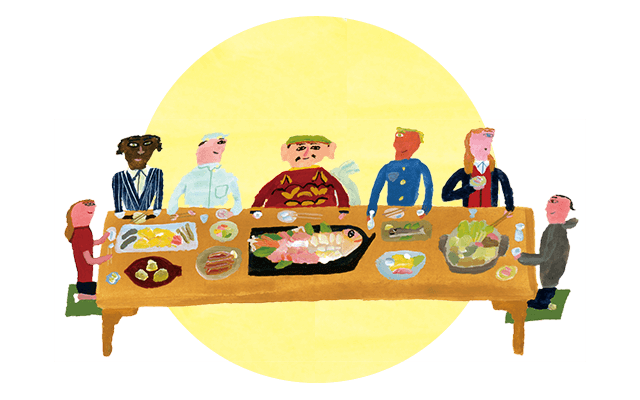
Harima Archives
2022.03.18 There Are Different Types of Koji
にも種類がある.jpeg)
Koji Can Be Broadly Divided into Three Types
It is said that there are three types of koji. First, there is kusa-koji, in which powdered grain is formed into a ball on which mold is transplanted from plant leaves, bark, etc., and propagated. It is mentioned in Chinese classics as brewer’s yeast. Mochi-koji, made from wheat and barley, is currently used for sake-making in Central and South China. However, its use did not spread in Japan. On the other hand, bara-koji, each grain of steamed rice is inoculated with Aspergillus oryzae alone, is used to make sake, miso, and soy sauce.
Aspergillus Oryzae, a Mold Representative of Japan
Koji is defined as “crops such as rice; wheat; or soybeans; bran, which is a by-product generated during the preparation of such crops; or rice bran, which have been inoculated with mold.” Koji mold, mainly used in brewing, is a mold of the genus Aspergillus. There are three main types of Aspergillus molds used: oryzae, sojae, and tamari, and each has its role. Sojae is used for brewing soy sauce, and tamari is used for soybean miso and soy sauce. oryzae has strong saccharification and protein electrolytic powers, and because of this, it is used for brewing miso, sake, soy sauce, etc. Generally, oryzae is called “yellow koji,” known as Japan’s national mold.
The Source of Koji, Seed Koji
Rice koji is necessary for making sake. Sake brewers purchase seed koji to make sake from about ten manufacturers who specialize in seed koji-making. Seed koji is a vast accumulation of koji mold spores. These spores are the source of koji. Each company has seed koji products with different enzyme productivity, reproduction rates, and various characteristics depending on the quality of sake produced.
Koji for Sake
Sake-making is said to be “first, koji; second, moto; third, tsukuri (manufacturing). After rice koji is made by growing koji mold on steamed rice, a kimoto (yeast mash) is made from water, koji, and steamed rice to increase the amount of yeast vastly. Japanese sake-making is distinct in that multiple microorganism seeds are further used simultaneously or sequentially. Through various other techniques, brewers can generate highly-concentrated alcohol of close to 20%, which is unprecedented in the brewing seeds of other countries, in low temperature (10–15 degrees Celsius) brewing. Through an accumulation of experience from before the establishment of modern science, sake brewing that skillfully controls microorganisms continues to this day without change.
Koji for Making Shochu
Yellow koji mold is used for making miso, soy sauce, and sake, but what is used in the case of making shochu? The answer is black koji mold (awamori) and white koji mold (kawachii). These koji molds characteristically produce the necessary citric acid or acid-resistant enzymes essential for making shochu.
Until the Meiji era (1868–1912), yellow koji mold was used to make shochu. However, in the southern Kyushu region where shochu is produced, it was difficult to control the low temperature for the moromi (mash), often resulting in the moromi going bad. However, manufacturers isolated black koji mold from the moromi used to make Okinawan awamori. Since then, the use of black koji has spread throughout Kagoshima Prefecture. Furthermore, in 1918, white koji mold, isolated as a variant strain of black koji mold, became popular among many manufacturers for shochu-making due to its soft aroma and taste.



